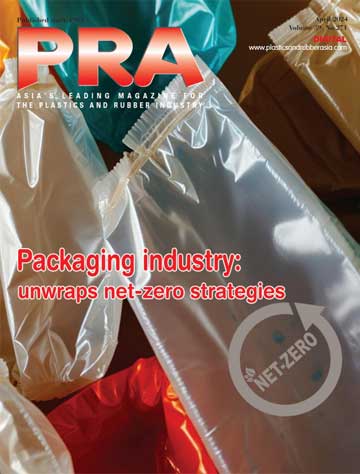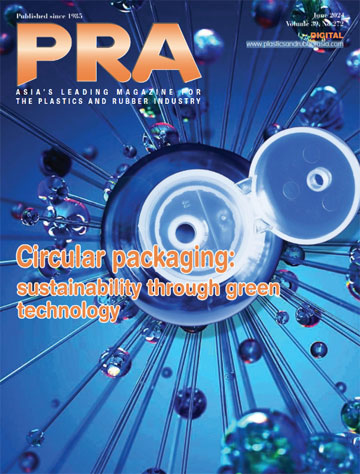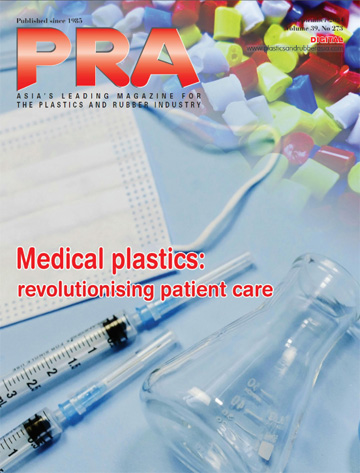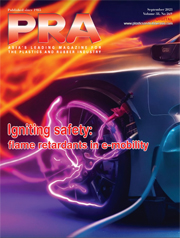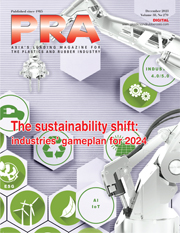Asia turns environmental challenges into sustainable opportunities
Asia's growing waste problem is driving a shift toward a circular economy by repurposing waste into high-value applications, says Angelica Buan in this report.
The global plastics waste problem has reached critical levels, with millions of tonnes generated each year, posing severe environmental and economic challenges. In Asia, the situation is particularly pressing. The World Bank's report, What A Waste 2.0 - A Global Snapshot of Solid Waste Management to 2050, projects that waste generation in the Asia-Pacific region will rise from approximately 802 million tonnes in 2016 to 1.1 trillion tonnes by 2030.

Similarly, waste volumes in Southeast Asia have surged since 2000, reaching around 150 million tonnes in 2016, with it to more than double by 2030, according to the United Nations Environment Programme (UNEP) summary report on Waste Management in ASEAN Countries.
In response, Asia is emerging as a leader in innovative waste management, with various initiatives aimed at transforming waste into high-value materials. These efforts include converting plastics into versatile products, from packaging to industrial applications.
As such, these initiatives not only reduce environmental impact but also drive the circular economy, where materials are continually repurposed, minimising the need for new resources.
This shift is crucial for advancing sustainability, as it promotes efficient resource use, reduces waste, and fosters a more resilient, eco-friendly future.
Thailand: versatile bioplastics made from pineeapple waste
Thailand faces severe issues with unmanaged plastic waste, with 2.88 million tonnes of plastic not being recycled each year, resulting in an 87% loss of material value, according to a World Bank circularity analysis. Poor recycling systems, a lack of recycling design, and inadequate source segregation all contribute to low-quality recyclables and feedstock contamination.
Despite these hurdles, Thailand is leveraging its position as a regional bioplastics hub, owing to its strong raw material production and advanced technology across the bioplastics supply chain.

A recent collaborative effort by researchers from Thailand and Malaysia exemplifies this progress. They have developed a biodegradable film made from leftover pineapple stems, offering a sustainable alternative to traditional plastic films.
Led by Associate Professor Taweechai Amornsakchai from Mahidol University, the team created this film using high amylose starch from pineapple stems, combined with glycerol and citric acid to enhance flexibility. The film’s mechanical properties can be tailored by adjusting citric acid levels, making it suitable for various single-use applications where high strength is not required.
The biodegradable film offers water resistance, heat-sealability, and fully disintegrates in soil within a month. This innovation is expected to reduce reliance on non-biodegradable materials by repurposing agricultural waste, marking a significant advancement in sustainable packaging solutions and promoting the circular economy.
Similarly, the Thai team of reseachers have also made significant strides in sustainable materials by upcycling waste HDPE milk bottles into high-stiffness composites reinforced with pineapple leaf fibres (PALF). This innovative approach has resulted in a 162% increase in flexural strength and a 204% increase in modulus, making the composites not only stronger but also environmentally friendly by sequestering carbon.
The process involves blending rHDPE with PALF and non-fibrous materials (NFM), which are then layered and compressed into composite sheets. The inclusion of PALF enhances the mechanical properties of the HDPE, particularly its heat distortion temperature (HDT), making it suitable for applications like automotive parts where durability under high temperatures is crucial.
The study highlights the potential of using agricultural waste for sustainable composite development, showing how waste can be transformed into durable, highperformance materials applicable across various industries, including the biomedical and automotive sectors, the researchers noted.
Bangladesh: practical farming solution with plastics
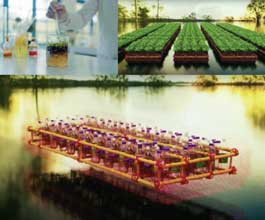
In recent years, Bangladesh has experienced a significant increase in plastic consumption. Data suggests that in 2020, the annual per capita plastic use in urban areas rose to 9 kg, tripling from 2005. This increase is largely attributed to the rise in the use of LDPE packaging materials, including plastic bags and wrappers.
Despite the soaring consumption, recycling efforts have lagged behind. In 2020, only 31% of the 977,000 tonnes of plastic used was recycled. The bulk of this waste consists of single-use plastics, such as shopping bags and wrappers, which have become a major source of pollution.
This mismanaged plastic waste has contributed to severe environmental issues, with pollution affecting urban areas, rural landscapes, and waterways including rivers and canals. It has also impacted the country’s agriculture sector because it is reportedly losing fertile land to rising sea levels and floods, and plastic across its rivers. It has adversely affected farmers’ livelihood and the nation’s food security.
Bangladesh is primarily an agricultural nation and it contributes nearly 14.8% to its GDP as well as employs about 41% of the labour force.
In response to environmental and agricultural challenges, an initiative, known as Plastic Farming, led by conglomerate Meghna Group of Industries (MGI), has garnered global praise. This project transforms plastic bottles into floating farms, benefiting both farmers and the environment.
MGI partnered with Bidyanondo Foundation, a local NGO that aids impoverished communities, to train landless farmers in this sustainable practice. They also collaborated with local authorities and farming communities to collect plastic waste from waterways as well as instruct communities on creating and using plastic floating beds for crop cultivation.
Implemented in the landless farming communities of Tungipara, Gopalganj, and Pirojpur districts, the floating farms are constructed using recycled plastic bottles arranged vertically in simple bamboo frames, covered with netting and topped with water hyacinth compost for planting. Crop seeds are planted in the compost. The plastic-based structure is expected to be durable enough for repeated use.
To address microplastic contamination, farmers can utilise water-based fungi, which are found effective in degrading microplastics and widely available in Bangladesh. After two years of R&D, agricultural scientists identified the water-based fungi as a key element in this hydroponic farming method.
(PRA)SUBSCRIBE to Get the Latest Updates from PRA Click Here»

